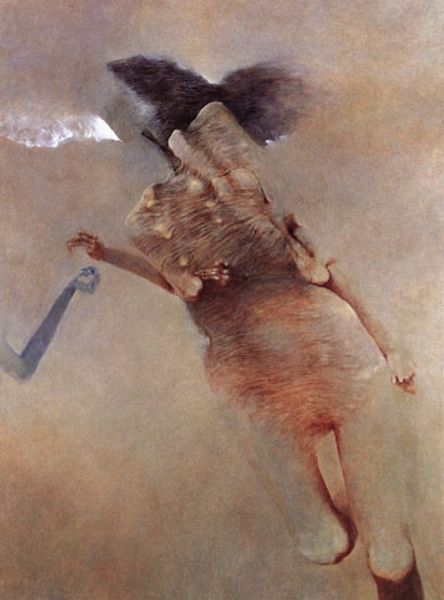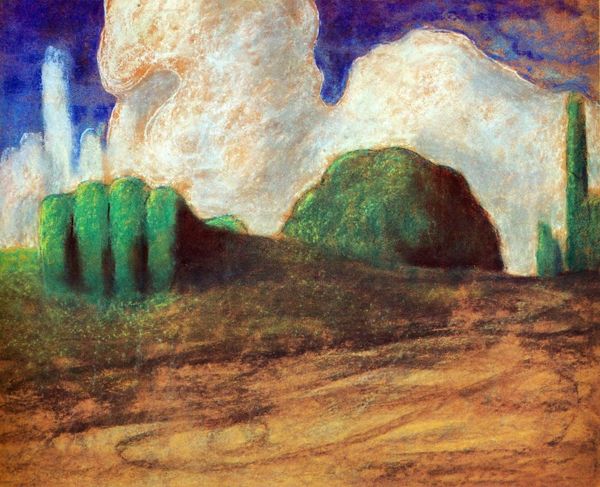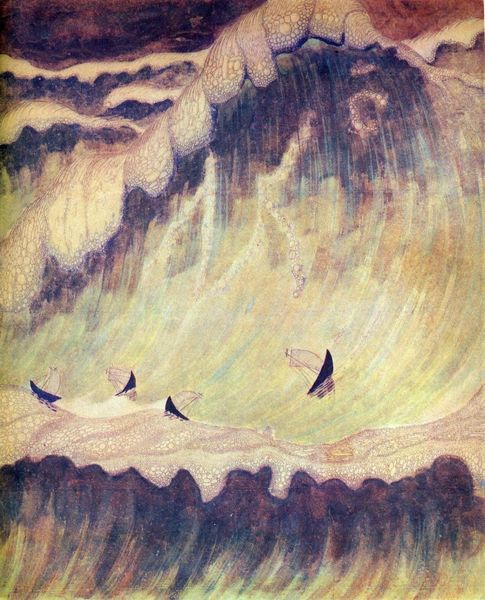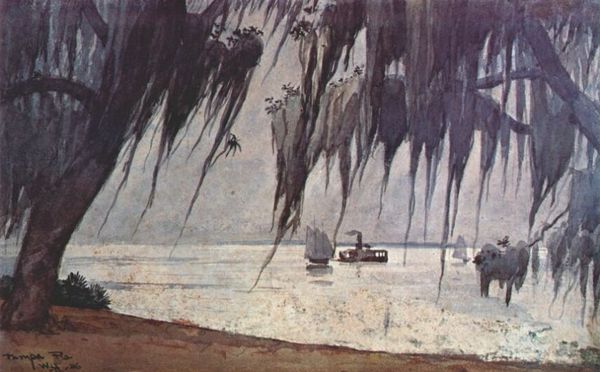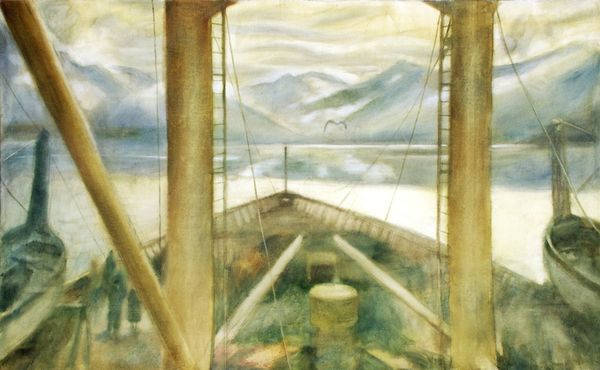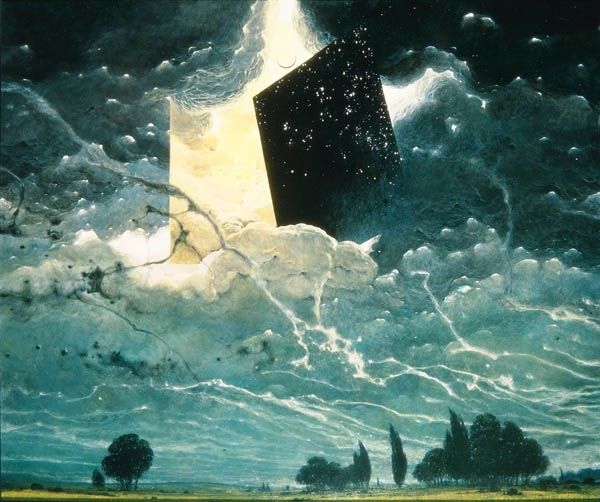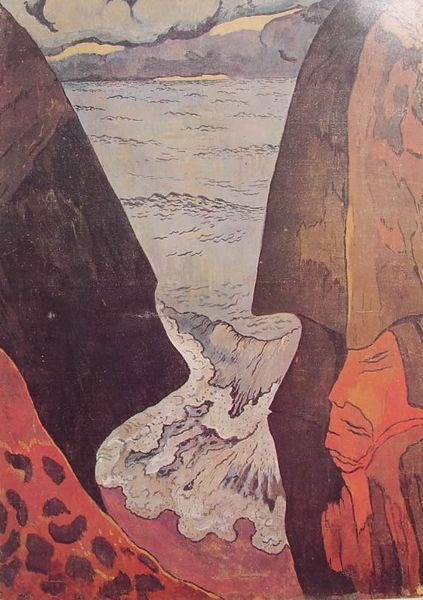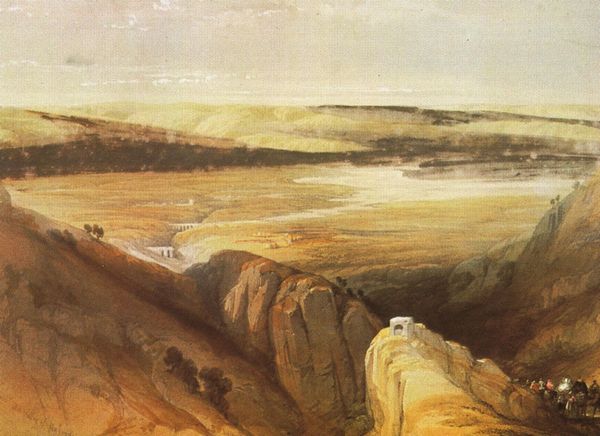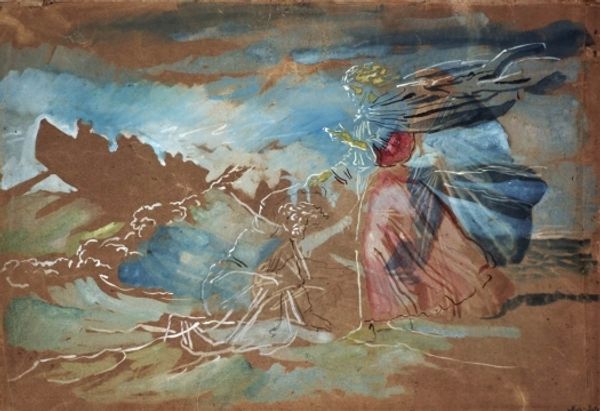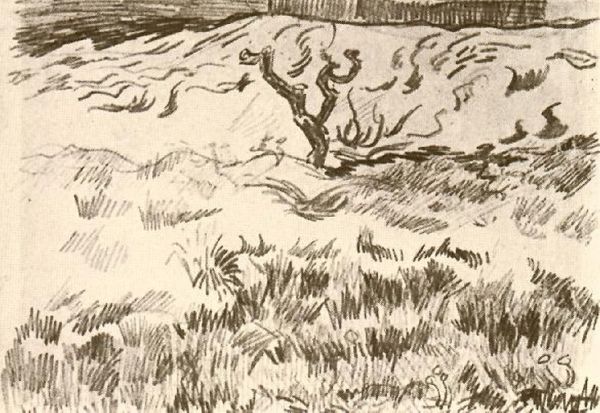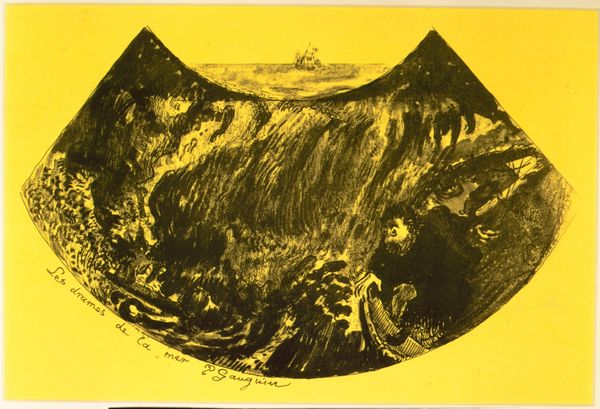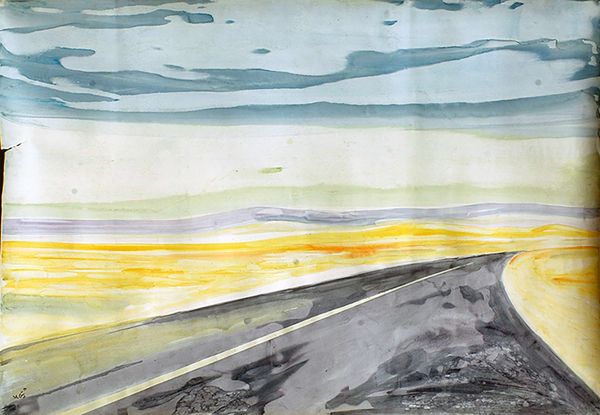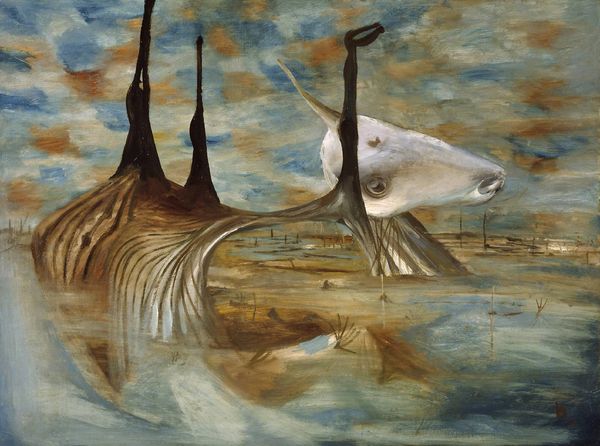
tempera, painting, plein-air, mural
#
tempera
#
painting
#
impressionism
#
plein-air
#
landscape
#
impressionist landscape
#
oil painting
#
genre-painting
#
mural
#
watercolor
Dimensions: 205 x 122 cm
Copyright: Public domain
Curator: Up next, we have a peek into rural life from 1868: Giovanni Boldini's tempera mural, “Haystack, eighth mural tempera from the villa 'La Falconiera'.” What catches your eye about it? Editor: I'm struck by the humbleness, really. Not in a condescending way, but how radically down-to-earth. The haystack seems monumentally large, built upon the sweat of those tiny laborers there on their ladder, but somehow…unpretentious. Like the land yields what's needed, and nothing more. Curator: I feel that simplicity, too. You know, Boldini wasn’t really known for landscapes—his later society portraits are far more famous, glittering with elegance. So, this glimpse into farm life is really quite different. It feels more like he’s trying to capture an experience or moment than construct an ideal. There is more of observation here than making something impressive. Editor: Exactly! You feel the effort involved. How each strand had to be individually placed on top of the structure, you almost feel a dialogue between labor and environment through his particular medium choices as he builds layers of detail here in tempera that speaks about manual handling of basic raw elements found nearby. Curator: He did embrace plein-air painting. The scene really does capture a particular type of light with those pale yellows against a milky blue sky, giving me some pastoral symphony sensation here with rural textures filling my emotionality here. You think there’s some social commentary woven into all of this? Editor: Absolutely, given the social and material history during the Italian *Risorgimento,* it seems like this piece functions as commentary— perhaps highlighting a need to value labor and its processes while bringing into question which materials constitute what could be valued by “high culture." Hay instead of gold. The countryside against elite settings filled with gilded rooms... Curator: I do feel he sees and treasures what work means in its physical essence as something truly valuable because that hard-won material essence can sustain many of us emotionally and materially. Editor: Agreed! “Haystack" gives material presence a sense of social heft beyond a fleeting pictorial moment because here raw elements intersect on a larger scale as it's given artistic interpretation using very hands-on methodology.
Comments
No comments
Be the first to comment and join the conversation on the ultimate creative platform.
